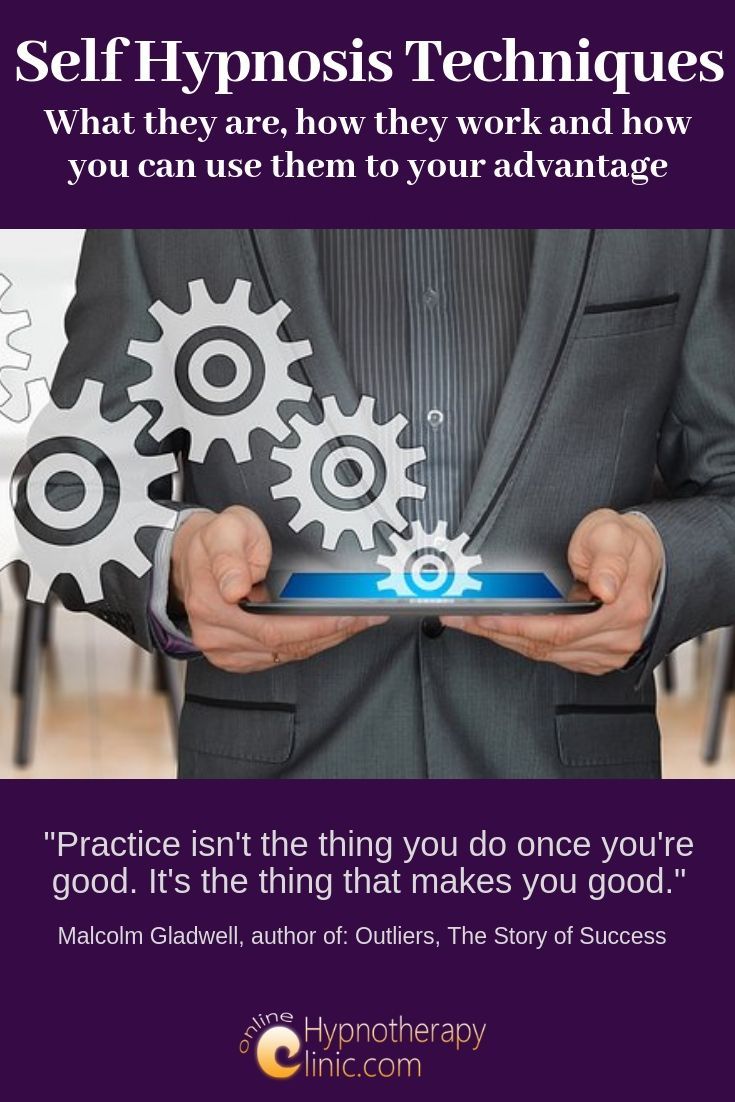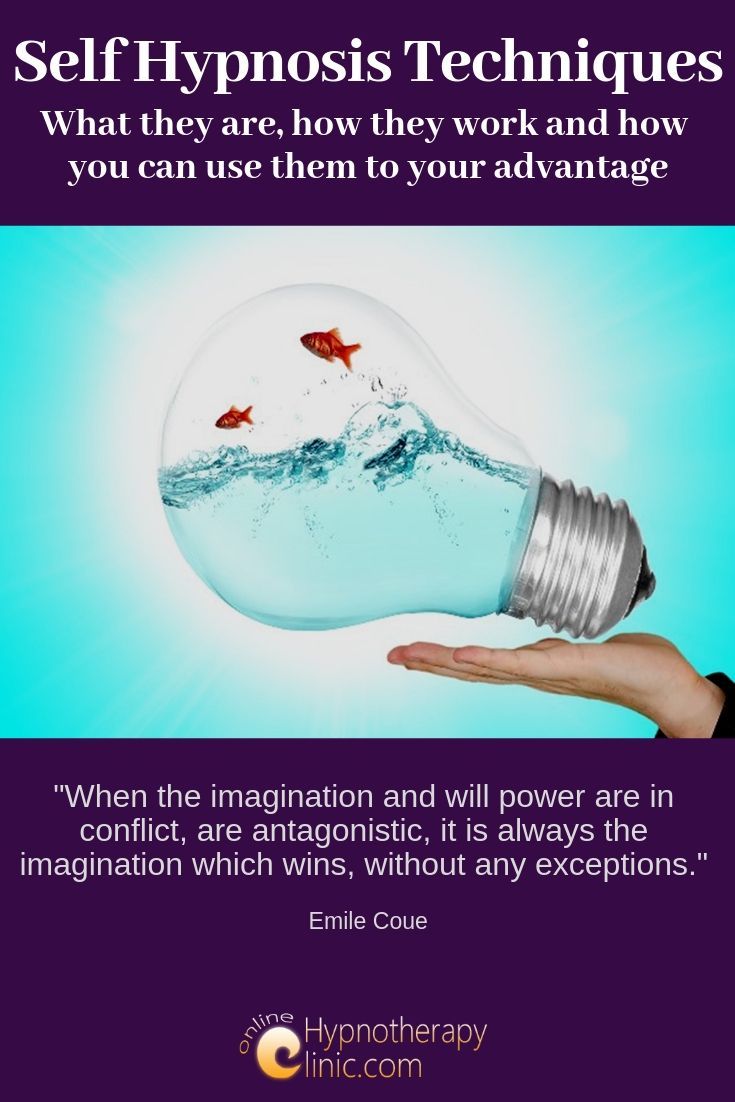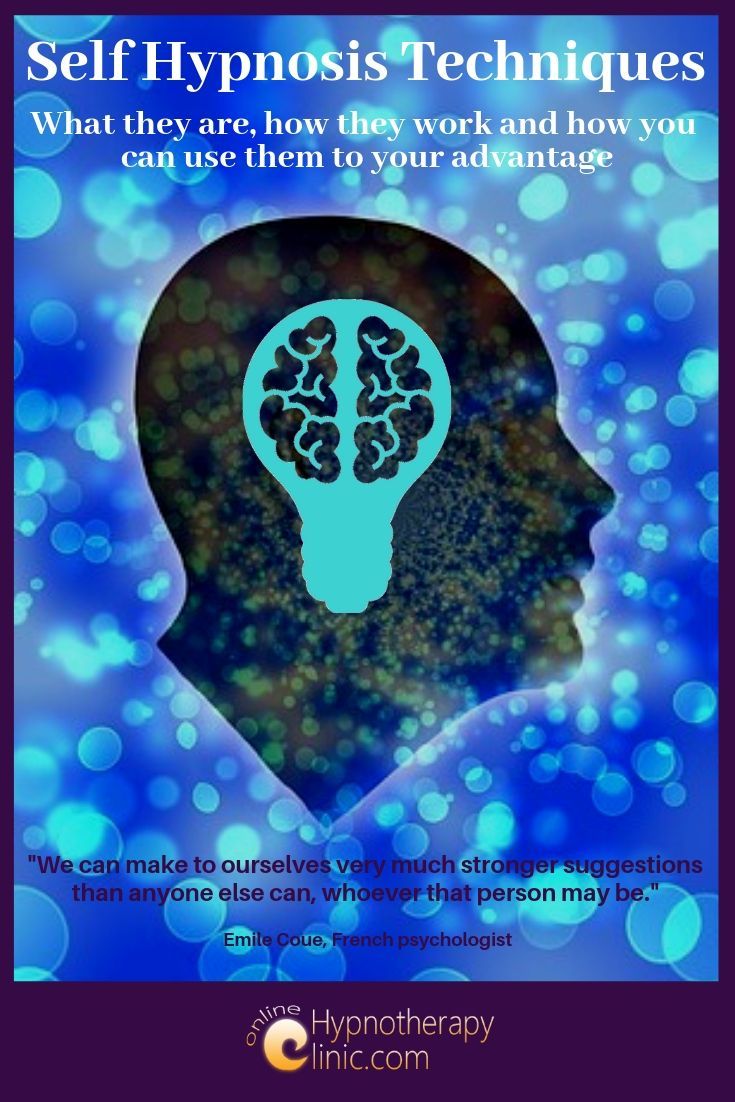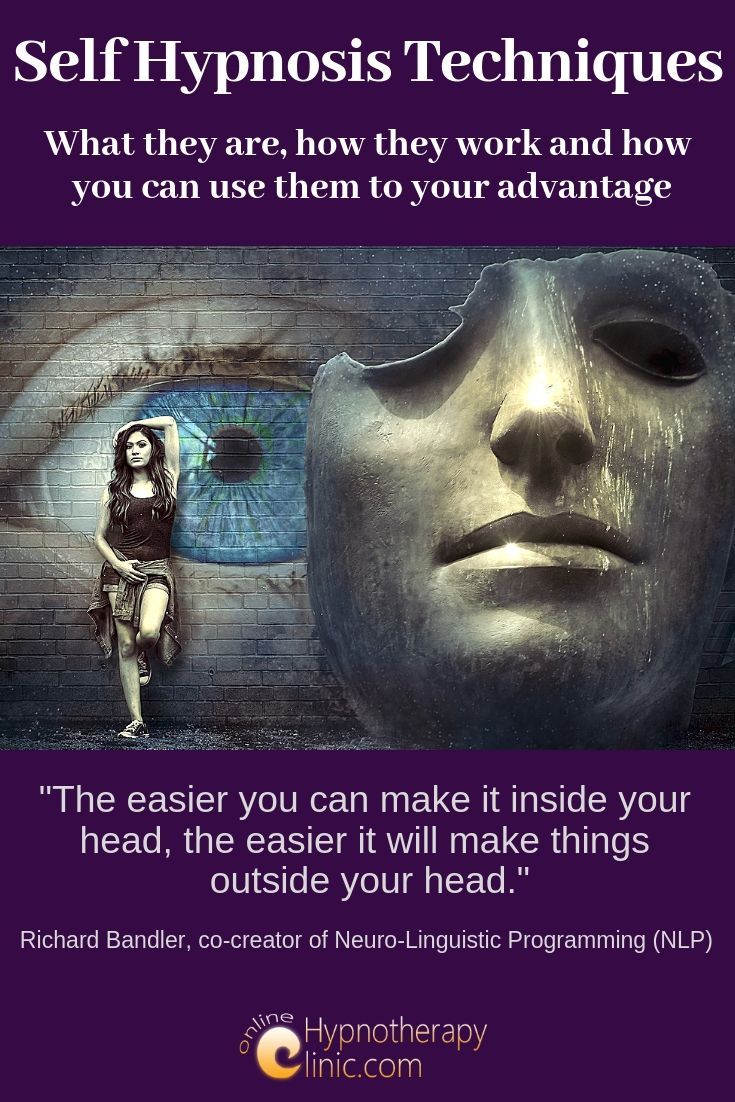Self Hypnosis Techniques to Help You Change Your Life
By Susanna Sweeney, MSC, MBACP, CHT
What are Self Hypnosis Techniques?
Self hypnosis techniques quite simply are hypnosis techniques that you can use on yourself.
This means, when you practice self hypnosis, you are acting both as hypnotist and client.
Advantages and Disadvantages of Using Self Hypnosis
The main advantages of using self hypnosis techniques over attending a hypnotist are:
- The independence you achieve
- A cost saving when you are not attending a hypnotist
- Self hypnosis allows you to be in full control of the process
But acting as both client and hypnotist also comes with a major challenge:
Hypnosis works best when you as the client can completely
let go. But how you can let go completely when you have to
be in control of delivering the program?
My free self hypnosis
guide contains a solution to this paradox. It talks you through
designing a complete self hypnosis program that you can start using at
home today.
Another challenge of using self hypnosis
techniques is the requirement for regular practice. You will have to be
determined and motivated to practice regularly and frequently so that
you can master these techniques. Learning self hypnosis is like learning any other skill: The more you practice, the better you will become at self hypnosis.
A good place to start you practice is with self hypnosis relaxation techniques.
Self Hypnosis and the Subconscious Mind
Self hypnosis is designed to address the needs of the subconscious mind. Your subconscious mind has its own, very particular way of working which is quite different from your logical or conscious mind.
For example:
- Your subconscious mind does not think in logically constructed sentences, rather thinks in images and metaphors.
- Unlike your conscious, logical mind, your subconscious likes, in fact loves, repetition.
- Your subconscious mind does not have a chronological sense of time like your conscious mind has. Rather, past, present and future blend into one here- or, in other words, time is irrelevant.
- The subconscious mind is home to your emotions. Positive emotions are strongly associated with positive events, past and future. The same holds true for negative emotions.
Hypnosis and self hypnosis techniques are
designed to work with these ‘quirks’ of the subconscious so that you can
make good use of this part of your mind.
What Self Hypnosis Techniques are there?
There are three categories of basic self hypnosis techniques:
The depth of trance increases progressively through the three types of techniques with the first level operating more or less in ordinary consciousness, the second level introducing minor trance, and the third level working with deeper trance.
A good self hypnosis program will include techniques from all three categories in order to maximize the benefits you can achieve.
Essentially, the more you occupy your subconscious mind with the goal you want to reach or with the changes you want to make, the more your mind will take on board these ideas.
1. Autosuggestion
This method is based on the work of French psychologist and pharmacist Emile Coue (1857-1926) who is quoted in the graphic at the top of this page. Emile Coue was the pioneer of auto suggestion. He believed that the most powerful thing any therapist could do for a client was to give positive suggestions which the client would then turn into auto suggestions, speeding up their healing process.
Working on your own, you can make up your own auto suggestions. You are the expert on your own life, and you know best what you want to change, and where you need support. You can then design optimistic, positive messages that can help you change habits, emotions, behaviors, mind set or similar.
The caveat here is that you need to understand how to design these messages right so that you achieve the desired effect and do no accidental damage.
- You would then feed these messages to yourself regularly.
- This can be done in ordinary consciousness, as well as in trance states.
- To maximize on your precious time in a busy world, I am suggesting to use time slots suitable for multi tasking, such as those where you are engaged in monotonous tasks such as washing the dishes or driving to work.
- As well as doing that, you can also include the very same messages when you work with trance states.
2. Visualization and Rehearsal
The second category of techniques works in a very mild trance state where, preferably, you close your eyes. Hence, it requires a time slot
where you are undisturbed. Ten to fifteen minutes at a time will go a
long way.
This group of self hypnosis techniques are based on
visualization and rehearsal of particular scenarios, such as upcoming
exams or goals you might want to achieve. Such techniques are frequently
used by athletes to enhance their performance.
The success of
these techniques is based on the timeless quality of the subconscious
mind where past, present and future are seen by the subconscious as one.
This means that by visualizing a goal as if you have already
achieved it, it is possible to convince the subconscious mind that
achieving this goal is the most natural thing for you.
Using these techniques can take the difficulty and
trepidation out of working towards very big goals, and can minimize the
negative impact of self doubt.
3. Deep Relaxation and Trance Based Self Hypnosis Techniques
The third category of techniques depend on a state of deep relaxation. This will require being completely free and undisturbed for the length of the entire practice session. The length of the session will vary depending on how you design the session.
Techniques working with trance are based on the following principle:
When
you are in a logical, conscious state of mind (the brain state that you use to negotiate everyday life), strong
internal censors operate in your brain, which are designed to keep you,
literally, from changing your mind. These censors manifest in qualities
like judgement, prejudices, or as psychological biases, and will only
allow in the kinds of messages that are already familiar to you, and that
you already like.
Therefore, if your goal is to change your
mind, you must learn to bypass these censors. In a state of deep
relaxation, you can switch off these censors and allow your subconscious
mind to be wide open for reprogramming it in any way you like.
How Self Hypnosis can Change your Life
You
can reprogram your mind in relation to many different issues, depending
on your needs and wants. The idea is to utilize self hypnotherapy for
change in your life- for the changes you desire, for example:
- If you want to stop smoking, check out self hypnosis for smoking
- If you want to lose weight, check out self hypnosis for weight loss
- To rid yourself of anxiety, check out self hypnosis for anxiety.
- To get rid of the symptoms of depression, check out self hypnosis for depression.
- Improve self esteem with self hypnosis for self esteem.
More About Self Hypnosis
- Does self hypnosis work? My answer might surprise you.
- Find out the basics about self help hypnosis.
- The benefits of self hypnosis for your life and work.
- Self help hypnosis challenges you should be aware of.
- What are auto suggestions?
- Learn auto suggestion techniques.
- Learn self hypnosis relaxation techniques.
- Find out how to recognize hypnosis and self hypnosis trance.
Learn Mind Power Techniques
- Mastering Your Mind Power
- Mastering Your Subconscious Mind Power
- Mind Power Techniques for Problem Solving
- Mind Power Techniques for Mastering Your Emotions
- Mind Power Study Techniques
- Millionaire Mind Power
I hope you have found this page on self hypnosis techniques helpful.
Let me know your thoughts in the comments below. How are you planning to use self hypnosis?
Regards,

Recent Articles
-
Havening Technique Training auf Deutsch
Apr 18, 25 02:59 AM
Havening Technique Training auf Deutsch- Details und Buchung -
Client Testimonials
Oct 06, 23 06:08 AM
Client Testimonials of my Online REPAIRenting® Program that uses various psychosensory approaches for safe and quick transformation -
Smoke Free Thanks to This Amazing Resource
Aug 02, 23 09:26 AM
Oh thank you for this simple resolution to all my worries! I feel like I have had a weight lifted off my shoulders. It is like cheating on giving up smoking.





New! Comments
What do you think? Leave a comment in the box below.